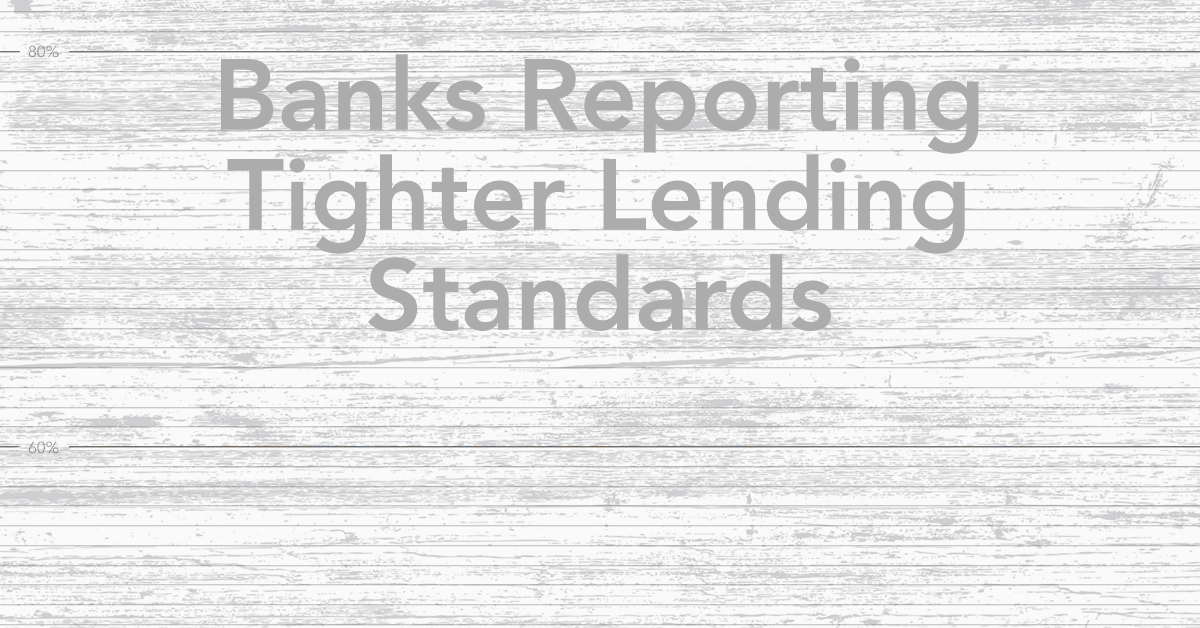With interest rates high, transaction volumes low, and property prices generally on the decline, it’s safe to say that the commercial real estate (CRE) market is undergoing an adjustment period. The market adjustment has triggered a process referred to as “price discovery,” in which many buyers are sitting on the sidelines waiting for lower entry ...
Read More ›CRE X-Factor – The End of the Beginning for the CRE Adjustment?
Banks Continue to Report Tighter Lending Standards for CRE
With interest rates well above recent lows and commercial property prices declining, commercial real estate (CRE) credit remains tight. How tight, exactly, is one of the questions that the Federal Reserve’s Senior Loan Officer Opinion Survey (SLOOS) attempts to answer.
Read More ›CRE X-Factor – Why Operating Costs for Commercial Properties have Soared
As rent growth has softened across all asset classes, property owners and operators have increased their focus on limiting expense growth. However, this has proven difficult for some line items, as both property insurance, and repairs and maintenance (R&M) expenses have increased significantly over the last three years. In this edition of the ...
Read More ›What Happens to Cap Rates if…
Multifamily capitalization (cap) rates have now increased for three consecutive quarters, the first time since the Great Financial Crisis. This is a sign that investors are requiring higher yields today in order to purchase a property.
Read More ›CRE X-Factor – Assessing the State of the CRE Reset
The commercial real estate (CRE) market is in a reset. Deal activity is down, and property prices are declining. We recently examined what clues history can provide about the potential length and depth of CRE price declines. Today, let’s examine what current CRE fundamentals can tell us about where we are in the process of resetting.
Read More ›CRE X-Factor - When Will Commercial Property Prices Recover?
The data is clear – commercial real estate (CRE) property prices are undergoing an adjustment. With that in mind, many industry professionals and investors are asking the next logical questions – how far will prices fall and when will prices bottom out and recover. Examining historical CRE data offers some clues, but, as the old adage goes, ...
Read More ›You Can’t Build What You Can’t Fund
Securing commercial real estate (CRE) financing in today’s market is no easy task. After the three bank failures this year, which triggered increased regulatory scrutiny of bank-held CRE loans, banks have pulled back on lending. This is especially true for riskier varieties of lending, such as construction loans, which involve assets that are not ...
Read More ›Bank Pull Back Creates Construction Lending Opportunity for Debt Investors
Building a property from the ground up entails substantially more risk than purchasing an existing building that is already generating income. Likewise, financing construction is riskier than lending against existing structures since development projects don’t generate income to pay loan interest until they are completed. For this reason, most ...
Read More ›Uncertain Economic Outlook Keeps Renters Where They Are, Pushing Cap Rates Up
In times of economic uncertainty, people tend to stay put. After all, why take on new financial obligations, like an apartment lease, when the future is less certain? Today, though unemployment remains low, inflation remains high, and the recent slew of layoffs at tech companies has many worried about their own financial position. The recent, ...
Read More ›CRE X-Factor: For Commercial Real Estate, Banks Aren’t the Only Lender in Town
When most people think of a loan, they think of a bank. Banks take deposits from customers in return for interest payments or other services. The bank then invests those deposits in loans, such as commercial real estate (CRE) loans, and securities that pay a higher interest rate than the bank is paying on the deposits. However, a bank is not the ...
Read More ›









